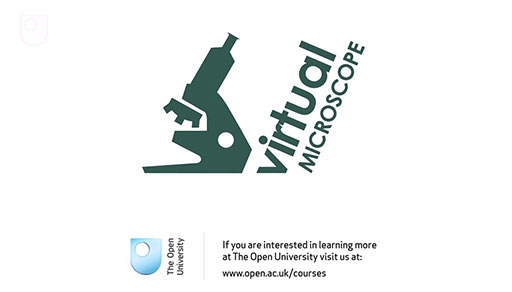2.3 Moon rocks under the microscope
The video introduces the study of polished thin slices of rock – known as thin sections – under the microscope, how samples are prepared and what geologists look for when they study thin sections. It also introduces the features of the virtual microscope including panning and zooming, measurements and the rotation feature. Finally, the minerals that you will see next, when you have your first chance to use the virtual microscope, are described in more detail.

